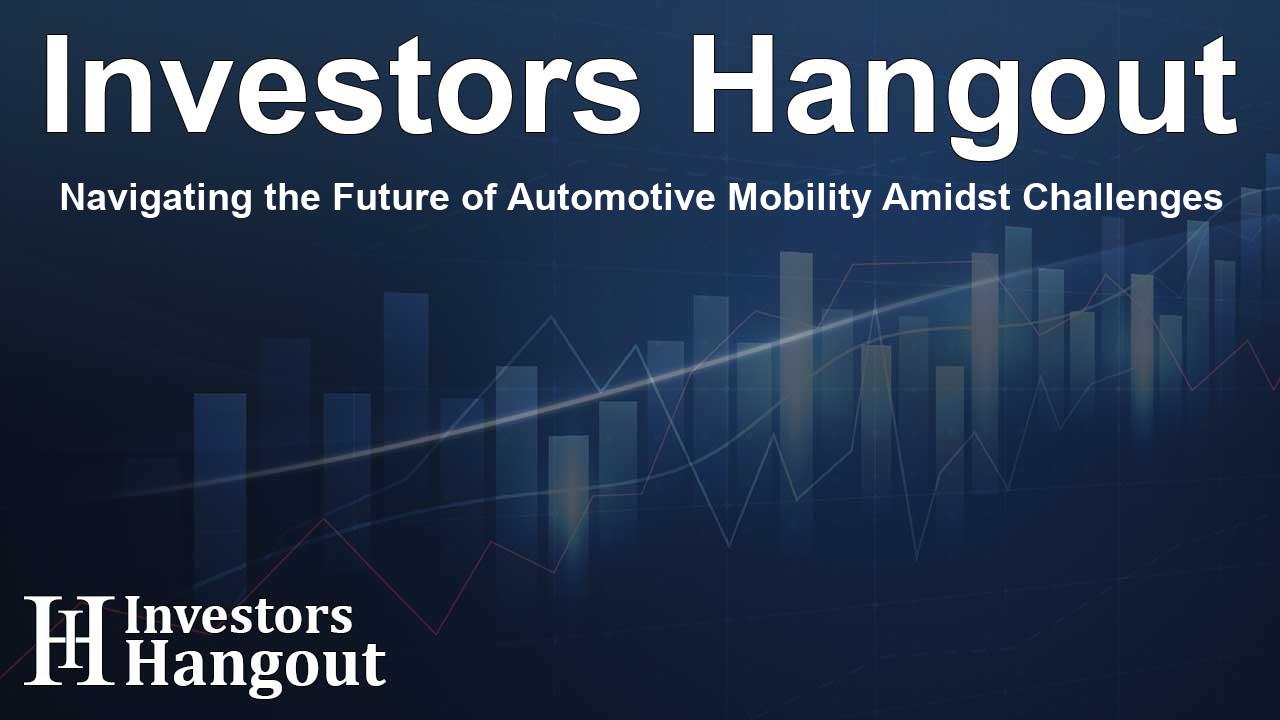Navigating the Future of Automotive Mobility Amidst Challenges

The Evolving Landscape of Automotive Mobility
The global automotive market is currently experiencing a notable shift, according to the latest study by Arthur D. Little. Their recent report sheds light on key trends and challenges in the sector, emphasizing that the envisioned landscape of connected, autonomous, shared, and electric mobility (commonly referred to as CASE) is not as close as many anticipated. The study is grounded in comprehensive research involving over 16,000 consumers across multiple regions, indicating a complex journey ahead.
Consumer Preferences in Automotive Technology
Interestingly, as technology advances, many consumers express a desire for assistance rather than complete autonomy while driving. This reflects a heightened concern among drivers regarding safety. The desire for individual journeys seems prevalent, contradicting the anticipated shift toward shared mobility solutions. Overall car ownership remains on the rise, highlighting an increasing commitment to personal vehicles.
Electric Mobility Trends and Concerns
Though we observe a rapid acceleration in electric mobility, the transition is not as straightforward as anticipated. Many consumers are gravitating toward hybrid vehicles, which offer a balance between traditional internal combustion engine (ICE) power and electric options. In a striking revelation, almost half (44%) of ICE drivers still plan to purchase another ICE vehicle, a sentiment that escalates to about two-thirds (65%) in the United States.
Markets: A Tale of Two Worlds
The study delineates a stark divide between mature automotive markets such as North America, Europe, and Northeast Asia, which are nearing peak motorization yet show reluctance towards embracing innovations in digitalization and autonomy. In contrast, emerging markets, particularly in regions like China and Southeast Asia, are witnessing a surge in vehicle ownership and demonstrate a robust willingness to explore product and service innovations. China stands out as a leader in electric vehicle adoption, outpacing other nations.
Insights from Industry Experts
Richard Parkin, a partner at Arthur D. Little's Automotive and Growth Practices, emphasizes that the simplistic perspective of linear progress towards a CASE environment is increasingly outdated. Both manufacturers and consumers are undergoing reconsideration regarding the costs and benefits associated with transitioning to new mobility forms. Furthermore, the disparity between the stable automotive markets in the West and the price-sensitive markets of Asia poses unique challenges to automotive Original Equipment Manufacturers (OEMs), who must navigate regulatory hurdles, geopolitical uncertainties, and the rise of new competitors, including Chinese EV manufacturers.
Key Findings of the Study
The report details five primary focus areas essential to understanding the current automotive landscape:
- De-motorization remains a limited trend primarily focused in urban areas. For instance, 76% of people living in large European cities with robust public transport options indicate a willingness to forgo car ownership, yet global car ownership continues to grow.
- Under 50% of consumers have engaged with new mobility services such as ride and car sharing, demonstrating that while ride-hailing services are popular, the broader adoption of shared mobility is yet to take hold.
- Safety concerns dominate consumer sentiments, with nearly two-thirds (65%) expressing apprehension about potential machine errors associated with autonomous driving systems.
- Hybrid and plug-in hybrid vehicles are anticipated to play a pivotal role in future mobility, aligning with consumer expectations; 34% of global respondents express interest in hybrid vehicles compared to 26% preferring fully electric options.
- Despite a growing digital marketplace, traditional dealer interactions remain important, with 77% of consumers valuing personal consultations during vehicle purchase processes, although there is a notable willingness among Middle Eastern consumers to engage in online transactions.
Frequently Asked Questions
What is the main focus of the Arthur D. Little report?
The report centers on trends and challenges in the evolving global automotive market, particularly regarding the transitions to connected, autonomous, shared, and electric mobility.
How do consumer preferences affect the shift towards electric vehicles?
Many consumers favor hybrid vehicles as a safer and more familiar transition from traditional ICE vehicles, with a significant portion still intending to purchase ICE vehicles.
What are the key markets highlighted in the report?
The report distinguishes between mature markets in North America, Europe, and Northeast Asia and growing markets in China, India, and Southeast Asia.
What challenges do automotive manufacturers face according to the study?
Manufacturers confront obstacles such as regulatory changes, competition from emerging EV makers, and consumer skepticism regarding fully autonomous driving.
Does the study indicate a trend toward shared mobility?
While shared mobility solutions exist, consumer preference for personal vehicle ownership remains strong despite the rise of ride-hailing and car-sharing services.
About Investors Hangout
Investors Hangout is a leading online stock forum for financial discussion and learning, offering a wide range of free tools and resources. It draws in traders of all levels, who exchange market knowledge, investigate trading tactics, and keep an eye on industry developments in real time. Featuring financial articles, stock message boards, quotes, charts, company profiles, and live news updates. Through cooperative learning and a wealth of informational resources, it helps users from novices creating their first portfolios to experts honing their techniques. Join Investors Hangout today: https://investorshangout.com/
Disclaimer: The content of this article is solely for general informational purposes only; it does not represent legal, financial, or investment advice. Investors Hangout does not offer financial advice; the author is not a licensed financial advisor. Consult a qualified advisor before making any financial or investment decisions based on this article. The author's interpretation of publicly available data shapes the opinions presented here; as a result, they should not be taken as advice to purchase, sell, or hold any securities mentioned or any other investments. The author does not guarantee the accuracy, completeness, or timeliness of any material, providing it "as is." Information and market conditions may change; past performance is not indicative of future outcomes. If any of the material offered here is inaccurate, please contact us for corrections.